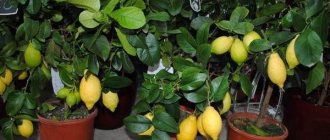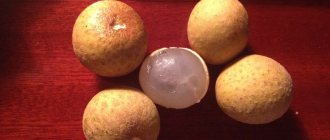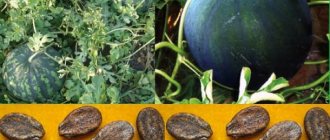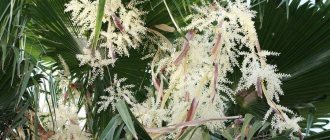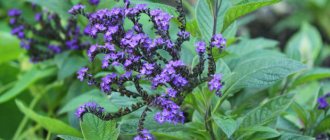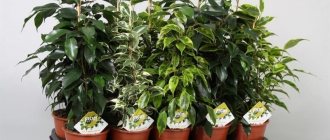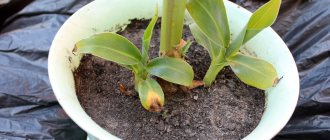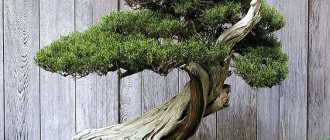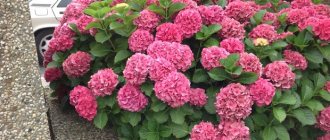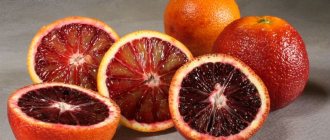Why grow?
At home, the orange plant performs several functions:
- decorates the interior
- improves the air quality in the home
- gives children (if any) the opportunity to learn hands-on how to care for citrus fruits
- you have the opportunity to taste a real orange, freshly picked from the branch
But, meanwhile, even experienced lovers of house plants do not dare to start this plant because of its possible complexity and relative decorativeness. In addition, you need to wait several years for fruiting.
young tree
Although one can argue about the beauty of the orange tree: its foliage is very bright, glossy, and with the help of shaping you can achieve a beautiful crown. So, even without fruits, it will look very worthy among flowering and decorative foliage houseplants.
Start growing an orange not by buying a ready-made tree hung with beautiful fruits, but by planting an ordinary seed from an ordinary orange. If you lack experience, you may not be able to cope with a store-bought “miracle”.
Citrus trees imported from abroad or grown in Russian greenhouses are kept on stimulants for many years and grown at constant temperature and humidity. Therefore, once in our apartments, such plants begin to rapidly fade away. Only experienced hands can save them.
Origin of the orange
The name "Orange" comes from the Dutch (according to some versions - English) language. It translates as "Chinese apple." The birthplace of orange is China. This is the oldest fruit cultivated by people. According to historical information, it began to be grown in the Middle Kingdom as early as 2500 BC. e. But there is an opinion that orange citrus seeds came to China from India.
Orange trees were also grown in ancient Egypt, where the citrus fruit was used as a medicinal remedy. The fruit came to Greece from India after the campaigns of Alexander the Great, but did not become widespread. It was brought back to Europe by the Portuguese in the 15th century. It is not for nothing that in some languages the name sounds like “portogallo”, i.e. “Portuguese”. Fruits came to the Mediterranean countries earlier, from the Middle East, after Christ’s campaigns. Now this type of citrus fruit has become the most popular.
The orange is of hybrid origin, its ancestors being the tangerine and the pomelo. It remains unknown whether the crossing occurred naturally or artificially.
According to the botanical classification, the fruit belongs to the Rutaceae family, the Pomerantaceae subfamily, and the Citrus tribe. It is an evergreen tree that reaches a height of 10-12 m and can live up to 100-150 years.
How did you get to Russia?
Oranges were brought to Russia from Holland in the 17th century
It was from this time that it began to be grown at home. First - in the greenhouses of noble nobles, and then in houses, in large tubs. By the way, the word “greenhouse” comes from the French “orange”, that is, orange.
Ancient greenhouses from the 18th and 19th centuries have been preserved, in which not only oranges were grown, but also many other exotic plants. By the way, we achieved flowering and fruiting of citrus fruits. Now, on the basis of greenhouses, farms are being created that, as before, are engaged in the propagation and grafting of oranges and other citrus fruits.
Many leading countries are now growing oranges: America, Brazil, Mediterranean countries, Iran, Turkey, Egypt, India and traditionally, for 3-4 thousand years, China. Orange production is not falling, but vice versa. Over the last 30-40 years alone, their production has doubled.
Transplanting an orange at home
Picking sprouts is carried out at the stage when two true leaves open on the orange, and it is important to take into account that the plant reacts extremely painfully to all manipulations associated with transplantation and possible damage to the root system. It is unacceptable for the root collar of the orange to end up underground when replanting.
The best way to replant a tree is to transfer the plant along with a ball of earth in the spring, before active growth of shoots begins and buds appear. An orange grown at home will have to be subjected to this procedure regularly, each time choosing a container with a diameter 1–3 cm larger than the old pot:
- The growing root system of a young plant requires expansion of the “living space” once a year.
- Mature fruit-bearing trees are replanted every 2–3 years.
For seedlings with 4–6 leaves, a pot with a diameter of about 10 cm and a soil mixture of two parts turf soil, one part leaf humus, the same volume of peat and sand are suitable. Already at the next transshipment, the proportion of turf soil in the soil is increased and a small amount of clay is added. An orange tree that is grown from a seed at home must be provided with good drainage and a watering regime that does not allow the roots to rot.
Description of the species
Orange is a very attractive plant. However, like everything that cannot grow in our latitudes. They began to describe it from the beginning of the 19th century.
Botanists who have encountered orange trees in the wild have been impressed for a long time. The orange tree is a long-liver. There are specimens that have lived up to 150 years.
Let's not forget that every year trees bear a huge amount of tasty and healthy fruits. One orange in a good year can produce 30-40 thousand fruits. The amount depends on the age of the plant.
orange leaves
The height of the tree reaches 6 meters in height, at home it is 3 times less. The crown of the orange is very beautiful. The leaves are regular lanceolate in shape, like all oranges. They are glossy and dark green in color.
orange blossom
White flowers have a special beauty. They are white, less often pink, extremely fragrant and arranged in clusters, sometimes singly. The flower consists of a perianth covering many stamens and five petals.
The fruits consist of several nests, each of which contains seeds. Orange, like tangerine, unlike some other citrus fruits, is easily divided into lobes, each of which contains one or two seeds.
The orange peel has 2 layers:
- flavedo (yellow), outer
- albedo (white), internal
Inside the outer layer there are many glands that contain essential oil.
All citrus fruits have an albedo layer. But, for example, in lemon it is dense, which does not allow peeling, and in orange it is weak and loose. This allows the peel to be easily separated from the fruit.
The pulp of an orange differs, like that of all citrus fruits, in its originality and complex structure. It consists of elongated sacs containing juice. You can observe that if you do not cut the fruit, but only open it, then the juice does not flow out.
This happens because the juice sacs are not disturbed.
Orange pests
Typical “internal enemies” of indoor orange are the following pests:
- scale insect An insect that looks like a brown blob; feeds on cell sap, leaving behind a sticky coating that is difficult to wash off;
- spider mite Spreads through the air, affecting mainly the lower part of the leaf, similar to grains of flour. In places where the leaf is punctured by the mite, spots appear; if the infection is severe, the leaves fall off;
- mealybug. Settles in the axils of leaves;
- whiteflies are small butterflies;
- thrips - whitish flies, whose larvae develop inside the leaf, on the surface of which light stripes are visible;
- aphid. Prefers the tender tops of twigs, leaving behind a sticky coating;
- the root-knot nematode cannot be seen; these worms live in the substrate and on the roots. Swellings appear on the affected areas, metabolism is disrupted, leaves and ovaries fall off;
- Weevils are invisible bugs that gnaw leaves and eat flowers. They are active in the dark, their presence is indicated by round holes in the affected area.
Photo gallery: who harms the orange
Plants are infected by mites by air.
Nematodes are more dangerous due to their invisibility
You can’t get rid of persistent whiteflies at once
"Humble" bugs eat leaves and flowers
Thrips reproduce at incredible speed
The mealybug is given away by the color of its body
Scale insect - stuck insect
Control measures
To remove nematodes, roots are immersed in water at a temperature of 50°C, damaged ones are removed and replanted; use Ecogel, which includes Chitosan (responsible for strengthening the immune system and cell walls). Insecticide solutions (Akarina, Fitoverma, Aktary) can cope with most insects, and all plants in the house are treated. After several uses, the drugs are changed because the insects develop immunity.
Among the folk methods used against sucking pests are:
- spraying with tansy (1 tablespoon per 1 tablespoon boiling water), garlic solution (1 head per 1 liter of water);
- wiping the undersides of the leaves with undiluted 96% alcohol;
- spraying with a solution of laundry soap;
- spraying with infusion of citrus peels - 1 kg of peels per 5 liters of warm water, a solution in the proportion of 10 liters of water per 100 g of infusion is sprayed on the leaves 3 times with an interval of 5 days.
Whiteflies are caught using sticky traps hung on branches. Ticks are washed off with a shower, having first covered the ground with cellophane and tied it around the trunk. Then a 3-5 minute solarium session is carried out under an ultraviolet lamp.
How to grow a tree from a seed
orange seeds
You can try to plant more than just an orange from a seed. But also lemon, persimmon or avocado. You just won’t get fruit from these indoor plants. Quite beautiful trees will please the eye, but only with foliage. Citrus fruits are a pleasant exception.
Why do you need a rootstock?
An inquisitive beginner who has never planted anything is faced with the question: if you plant an orange seed, what will grow? Moreover, the orange is the most ordinary one, from the nearest supermarket. The answer is yes. We will tell you how to do this below.
But we don’t need an orange seedling, but a rootstock. What does it mean? When we buy a ready-made tree with orange fruits in a flower shop, we do not even suspect that it is grafted. In 99% of all cases, the scion and rootstock are different types of citrus fruits.
Citrus grafting
All citrus fruits are grafted, otherwise, grown from seeds, they will bear fruit late (if this happens at all) and the fruits will not be as tasty. Quite often you can hear or read on specialized forums a story whose fragments are similar.
It’s about the fact that at work there is a huge lemon (orange, tangerine) grown from a seed, which is already 15 years old (10, 20, 30). And no one has ever seen it bloom. Accordingly, this tree also never indulged in fruits.
If you want your efforts not to be in vain, immediately find a good rootstock for your future tree. They can be found through advertisements. But the search will be much more effective on specialized sites, where people who are passionate about growing citrus fruits share their experience and excess planting material.
Which citrus fruits are best to plant for rootstock?
In order for citrus fruits to bear fruit, they need to be grafted. For example, kumquat or calamondin are never planted with seeds as rootstocks. Firstly, they are too frail and take a long time to grow.
Secondly, the root system of these seedlings is very weak. Both callus take a long time to grow. In a word, they are not used in this capacity.
It is believed that the best rootstocks for orange are:
- lemon
- pomelo
- bigardia or sour orange
- grapefruit
The fact is that various factors are taken into account, such as growth rate and others. Lemons are most often used, simply because they are more accessible. Than all other types of successful rootstocks.
One-year-old lemon seedlings
Two more circumstances that are taken into account when choosing a rootstock. It must have a powerful root system in order to fully feed itself and feed the scion. And another important thing: callus should grow quickly and the wounds should heal within a short period of time.
Some people call New Georgian lemon as a successful rootstock for orange. It, like bigardia, is ready for grafting within a few months after planting. And not in a year, like a lemon.
Its root is powerful and it grows callus instantly. One of the best options for rootstock. There are many opinions regarding grafting of citrus fruits. Some people like grapefruits as a rootstock because they have fairly vigorous shoots.
Some people categorically reject them for use in vaccinations. The best way to find out who is right is to experiment with grafting yourself.
How to prepare a seedling for grafting
Previously, it was believed that the rootstock should be as thick as a pencil. Now smaller barrel diameters are allowed. Hobbyists who have achieved virtuosity in matters of grafting graft citrus fruits with a trunk as thick as a match.
For successful grafting, take one-year-old lemon seedlings or 4-5 month old sour oranges. Some people apply a higher dose of nitrogen fertilizer to help the seedlings grow faster. This should not be done.
Because exceeding the dose of any element, including nitrogen, has the same negative effect as its deficiency.
Excess fertilizer is harmful to potted plants
Among the disadvantages of this method is the increased susceptibility of the plant to fungal diseases. If the excess nitrogen is large, this will also affect the appearance of the plant: the color of the leaves and trunk will change, they curl and become stained.
The best way to grow a healthy plant is to use a complete fertilizer, which contains the entire set of basic elements and microelements. In order for the lemon to grow and develop better, you can occasionally spray it with Epin to use the plant’s internal reserves.
Watering should be moderate. The soil should be slightly moist. If there is too much water, the roots will begin to rot. Outwardly, this will not appear immediately, but such a plant as a rootstock will be of little use. After all, roots are the main organ for feeding a plant.
We prepare everything for planting
Gardener's Tool Set
For beginners, you can take lemon seeds. If you really want to grow an orange from a seed, then you can do it. Orange can also be grafted onto orange rootstock. However, you will have to wait a little longer than a lemon, about a year and a half.
In order to plant citrus seeds, we need:
Plastic cups
Containers for soil
Some people specifically buy transparent cups so that they can observe the development of the root system.
Drainage
It is used to allow excess moisture to escape through the drainage hole. In the absence of drainage, excess moisture does not come out, but accumulates in the lower layer of soil and can sour there.
Pebbles or small expanded clay are used as drainage
The latter is sold in flower shops in bags labeled “Drainage”.
Priming
It is best to use the one where the name says: “For citrus fruits.” To improve germination, you can add river sand to the soil. It must first be calcined in the oven (20-30 minutes) or in the microwave (5 minutes).
Packaged soil
If you use self-prepared soil, then you must definitely use sand. Your soil must also be calcined so that all spores of fungal infections die. It is not necessary to use highly nutritious soil for sowing.
Additionally: potassium permanganate, watering can, water for irrigation, marker for signature, plastic bag, fluorescent lamp or phytolamp.
Seeds must be pre-soaked
In order for the seed to germinate faster, you can first soak it. Seeds of any plants are soaked in a small amount of water so that it barely covers the planting material. Otherwise, the seeds may “suffocate” and not sprout.
What is better to use for planting: pots or plastic cups? There is no unity in answering this question; each method has pros and cons. But most still prefer to use glasses.
They are smaller and the soil in them will not have time to sour. As soon as the root system has entangled the entire earthen ball, you can transplant the plant into a larger container. And in a pot, the root will take a long time to master the entire volume, which will slow down the development of the above-ground part.
Planting seeds
You can plant 2 or 3 seeds in a large pot at once.
You can soak the seeds in a weak solution of potassium permanganate for 15-20 minutes to disinfect the planting material.
The landing algorithm is as follows:
- Drainage holes are made in the cup with a hot metal object, usually a nail.
- Usually 2-3 holes are enough.
- Pour drainage into the bottom, approximately 1/5-1/6 of the height of the pot.
- Then add soil.
- We leave it for several hours so that it settles.
- Usually this procedure is done simultaneously with soaking the seeds.
- Just during this time the earth will settle and it will be possible to begin planting.
- In addition to soaking for several hours, you can leave the seeds in a damp cloth to germinate.
- The fabric should be washed every day in clean water and not allowed to dry out.
- After 2-3 days, the seeds (or seeds) can be planted.
- Before planting, make a small depression in the center of the pot or glass and spill a little water.
- The soil should be only slightly moistened, but in no case should the so-called “swamping” be allowed, when the soil turns into mud.
- If the soil has settled too much, add fresh soil.
- Plant the seed to a depth of 2-3 centimeters.
- After planting, sprinkle loose soil on top and do not water again.
- There should be enough moisture.
- If the seed has a “beak”, that is, a small sprout, when planting, point it down, this is the root, the cotyledon leaves will appear later.
- After planting, cover the cup with a plastic bag.
- There should be space between the soil surface and the bag.
- A so-called mini-greenhouse is formed.
- The air humidity in it should be increased to speed up germination.
- Shoots will appear in 2-3 weeks.
- How quickly this happens depends on many factors.
- First of all, this is pre-sowing treatment.
- If you pre-soaked and germinated your seed, then you may be pleased with the seedlings within a week.
- If there is no time, they can also plant dry seeds.
- In the best case, the sprout will appear in a month.
- Until this time, you can keep the pot even in a dark place.
- The main thing is to check it regularly, at least three times a day.
- The bag must be removed at least once a day and ventilated for 15-20 minutes.
- You also need to monitor the soil and seedlings.
- As soon as a sprout appears, the bag must be removed and the plant placed in the sun or under a lamp.
- You can wear the bag at night for some time, for example, a week.
When germination, the soil should always be slightly moist. Check not the surface of the soil, but a little deeper. Place your index finger on 2 phalanges. If you feel damp, then everything is in order, you can wait with watering.
How to care for an orange
In order for the culture to develop normally and fully, it is recommended to provide it with quality care.
Watering
In the summer, the tree should be watered every day. This is especially true in hot weather. It is important to avoid stagnation of liquid in the pot. Excess moisture in the pan should be poured out in a timely manner. This will help prevent root rot.
Settled or melt water is suitable for irrigation. It should be at room temperature. If you use too cold a liquid, there is a risk of damage to the roots and death of the crop.
With the arrival of winter, orange requires less liquid. It is recommended to water it maximum once a month. If the plant does not rest in winter, it is watered when the top layer of soil dries out.
Fertilizer
Fertilizing with complex fertilizer should be carried out at intervals of 2 weeks. To make a useful composition, you should take 10 liters of water, 20 grams of nitrogen fertilizers, 25 grams of phosphorus agents and 15 grams of potassium salt. It is recommended to add iron sulfate to the composition once a season. Potassium permanganate is added to it monthly.
Crown formation
When cultivating an orange, you should definitely systematically prune the plant. It is performed to form a beautiful crown and prevent the appearance of pests. It is worth pruning all the branches that thicken the crown and are directed inward. It is also worth getting rid of weakened, affected, elongated processes.
See also
Why do tangerine leaves turn yellow and what to do, tree diseases and pests
Read
When forming the crown on the branches of the first row, 2-3 shoots of the second are left. On the branches of the second row there are 3-4 shoots of the third. Fourth order branches are left. It is on them that the fruits appear.
Transfer
The plant should be replanted in the spring, before new foliage forms. This procedure should be carried out until the crop reaches 10 years of age. There are the following stages:
- When the orange has 2 true leaves, pick it. The sprouts have weak roots. Therefore, the transplant is performed carefully. There is no need to deepen the root collar.
- When 4-6 leaves appear, the seedlings are moved to separate pots. In this case, it is worth choosing small containers.
- The next time the orange is replanted when it reaches 15-20 centimeters. The pot should be 2 centimeters larger than the previous one.
- A full-fledged culture is transplanted after 2 years.
When the orange reaches ten years of age, it should not be replanted. In this case, it is recommended to remove the top layer of soil and add fresh soil.
Getting ready for winter
In winter, the tree should be dormant. To do this, the crop should be removed to a shaded place, watering and fertilizing should be avoided. It is also not recommended to use additional lighting. The temperature should be +10-12 degrees.
Diseases and pests: protection and prevention
Oranges often encounter diseases and pests. The tree often suffers from scale insect attacks. Insects absorb juices from leaves and shoots. As a result, the plant turns yellow and withers. Its leaves curl and death occurs. Insecticidal preparations – Aktara or Intavir – will help to cope with the problem.
Often the plant suffers from attacks by spider mites, aphids, and mealybugs. In this case, all above-ground fragments of the plant are affected, including ovaries and buds. A soap and tobacco solution will help to cope with parasites. If it does not produce results, use insecticides - Actellik, Fitoverm.
Often a houseplant suffers from fungi and viruses. The danger is posed by homosis and gum leakage.
Diseases lead to damage to shoots, trunk, and foliage. The affected areas should be cleaned and covered with garden varnish. The crop is irrigated with any systemic fungicide.
Caring for seedlings after germination
To make an orange feel “at home,” the same conditions are created for it as in its homeland. To summarize, orange loves heat, high humidity and sun. But everything needs moderation. For successful development, we create the following conditions for an orange or lemon seedling:
Temperature
The higher the better. In the first year of development, this rule only works for the benefit. As the plant grows and blooms, the temperature will need to be regulated differently. But this will happen only in a few years.
In winter you need to reduce the temperature to 15 degrees
At the same time, do not forget about the lighting, otherwise the plant will stretch out. And the rest of the time - 20-25 C is the most comfortable temperature for an orange. At this time, especially when the temperature rises, you need to monitor the sun.
Lighting
Diffused light would be best
Orange loves sun, but direct sunlight can cause it to dry out. Especially in the first year, when a small amount of substrate in a glass dries out in half a day.
Watering
Young assistant
Regular, but no frills. For irrigation, use only settled water or after a filter.
Spraying
Several times a day, especially in the heat.
Top dressing
It is advisable to use complex fertilizers, such as nitroammophoska, which contains three main elements: nitrogen, phosphorus and potassium.
Nitroammofoska can be used throughout the development of the orange tree
As an additional recommendation, you may be advised to keep your seedlings away from drafts, otherwise they will die. To maintain high humidity, you can place cups with seedlings in trays, where you can spread wet moss.
How to choose an orange variety to grow at home
Choosing a variety is a difficult task. One significant disadvantage has emerged here: if you buy a fruit in a store and collect seeds from it, then, as a rule, it is not possible to determine the variety. Just bad luck. Therefore, I had to order seed material on the Internet. I chose the “Washington Navel” option, but gave comparative characteristics for each varietal variety. It was difficult, but I managed.
In terms of external characteristics, Washington Navel looks exactly like this
| Variety | View | Ripening period | Characteristic | Care requirements and features |
| Moro | Bloody (King Orange) | Early (the first fruits appear after approximately 4 years) | The peel has an orange tint. The pulp is red with bright crimson veins. The diameter of the fruit is from 5 to 8 cm, weight is 170-220 g. The variety is characterized by a strong citrus aroma and bitter notes of taste. | It grows and develops well only under conditions close to natural: warm temperature and sufficient humidity. Loves light areas. In the first few years, the tree develops very slowly. |
| Washington Navel | umbilical | Early (after 4 years) | The fruits are bright orange, with a round or slightly elongated shape. The taste is sweet with a slight hint of sourness. A small number of seeds are present. | Unpretentious in terms of care: resistant to diseases and pests. Can tolerate short-term drops in temperature (down to minus 7-8 degrees). Most often used for growing at home. |
| Tarocco | Bloody (King Orange) | Medium ripeness (5-6 years after planting the seeds) | Medium in size. A distinctive feature is its thin red-orange skin. The red pigment in the pulp is not very pronounced. | It is demanding of the soil: it must be saturated with nutrients and fertilized on time. Does not tolerate temperature changes (especially sharp drops). |
| Sanguinello | Bloody (King Orange) | Late (after 7 years) | The peel is medium thick and orange in color with dark red pigment spots. Their number increases as they mature. The flesh is dark scarlet. The taste is sweet. The size of the tree is not very large. | He is whimsical in terms of care. It does not tolerate low temperatures and is characterized by low resistance to diseases of various types. Photophilous. But during periods of extreme heat, it is better to put them in a shady place to avoid burns on the foliage. |
| Kara-kara | Red umbilical | Early (after 4 years) | Known since 1976. It is considered a mutation of the Washington Navel variety. The peel is medium thick, orange. The pulp is very juicy, ruby in color. Sometimes it produces variegated shoots on which striped fruits develop. | It is preferable to use peat soil for growing. Requires regular feeding and fertilizer. It does not tolerate dry air, so it needs to be sprayed at least once a day. |
| Gamlin | Regular (oval) orange | Late (after 7 years) | The fruit is medium-sized with a round shape. The skin is thin and easily separated from the pulp. The tree is small. | Unpretentious in terms of care. Adapts perfectly to changes in temperature and environment. The main thing is to water and moisturize the plant on time. |
| Clementine | Hybrid | Medium ripeness (after 4-5 years) | Hybrid of tangerine and orange. In appearance it is similar to tangerine, but has a harder and denser peel. The taste and aroma are inherent in orange. | Places for growing should be semi-shaded. Regular feeding and fertilizers are necessary for normal growth and development. It is also recommended to constantly treat against possible pests and diseases (it has little resistance to them). |
| Verna | Regular (oval) orange | Medium ripeness (after 4-5 years) | Small, elongated fruits. The taste is sweet. The pulp is fleshy and juicy. There are very few or no seeds present. | There are few requirements regarding care. It gets along well with other plants and does not require special attention. Resistant to low temperatures (up to minus 5 degrees). |
You can learn more about other varieties of orange in the following video:
My citrus “garden” contains various fruit plants. Please note that home care for a tangerine tree is different from that required for an orange tree; I advise you to familiarize yourself with the features.
The flesh of blood oranges can be dark brown in color.
Orange grafting
In order for an orange to bear fruit, it needs to be grafted. Let's see how to do this:
You need to prepare: rootstock, orange stalk, pruning shears or blade, polyethylene or latex (in extreme cases, you can take electrical tape).
Algorithm of actions:
- Plant it yourself using our tips, or buy a ready-made rootstock.
- Purchase a branch of a fruiting orange tree from breeders or hobbyists for grafting.
- You need to buy it on the day you plant the plant.
- Before the procedure, you need to store it in a plastic bag, wrapped in a damp cloth.
There are two methods of grafting: budding (or eye) and cuttings.
- To successfully carry out the event, you need to wait for the time of active sap flow, when the bark peels off well.
- We remove the leaves from the scion.
- After grafting, we tie the graft site and water it generously.
- After 5-10 days you need to check. If the eye does not turn black, then the bud has begun to take root.
- After 3 weeks, the bandage can be removed.
- When budding, we cut off the upper part of the rootstock only when the scion bud has sprouted and taken on an “adult” appearance.
- Budding
Vaccination schedule
Vaccination is not as complicated a procedure as it might seem at first glance. In order for everything to go well, you need to act confidently.
You can “fill” your hand on young branches of any tree or shrub. You need to take ones that are similar in diameter to the citrus fruits that interest us.
Orange propagation methods
At home, oranges are propagated by seeds, grafting, cuttings and air layering.
Seeds
Seedlings from seeds quickly adapt to environmental conditions, but lose some of their varietal properties and begin to bear fruit after 8–10 years. Therefore, they are used as a valuable material for rootstocks, onto which cuttings of other varieties or other types of citrus fruits, except mandarin, are grafted. The ideal pair is calamondin (a hybrid of tangerine and kumquat) on orange rootstock. Calamondin is an evergreen tree that is unpretentious to the humidity of the earth and air; its flowers are not conspicuous and devoid of aroma. The tree looks beautiful when ripe - it is strewn with orange balls, but only amateurs can appreciate the bitter-sour taste of the fruit.
Calamondin feels great on orange rootstock
Vaccinations
Orange is usually grafted from April to May, when the rootstock (what is grafted onto) has awakened and the scion (what is grafted) is dormant. The pruning shears and knife, as well as the grafting site, are disinfected; Do not touch the cuts with your hands. To ensure a smooth cutting surface, you should fill your hand. The joints are fixed with cling film and electrical tape; the plant is placed in a mini-greenhouse.
Budding (by eye)
For spring grafting, buds are taken from the shoots of the current year, for summer grafting - from the previous year. The most popular shield budding:
- On the rootstock at a height of 5–7 cm from the ground, make an incision with the letter “T”, and use the tip of a knife to push the bark away. The length of the transverse cut is 1 cm, the length of the longitudinal cut is about 2.5 cm.
- The leaf near the bud or eye is cut off, leaving a short stalk; it is convenient to hold the scion by weight.
- At a distance of 1.5 cm from the bud, transverse incisions are made at the top and bottom, and in one movement from the bottom up, the bark and bud are cut off between the incisions. The knife is held almost parallel to the shoot.
- The shield is tucked under the bark, fixed, a plastic bag is put on, and the edges are tied.
Budding requires some experience
Into the cleft
Procedure:
- The central shoot of the rootstock is cut to the desired height of the trunk (on average 10 cm), and a stump is obtained.
- Split it in the middle to a depth of about 2 cm.
- The leaves of the cutting are shortened by half, its lower part is cut with a wedge (the length of the cut corresponds to the depth of the gap on the rootstock).
- Insert the cutting into the gap so that there are no voids between the cambium of the rootstock and scion.
- The vaccination site is fixed, a bag is put on top and tied.
The fusion of the rootstock and scion occurs in about a month
Handle
An orange from a cutting retains all varietal characteristics and bears fruit on average after 4 years, but in some varieties the cuttings do not take root. For quick rooting you need:
- diffused light or partial shade;
- warm loose substrate;
- moderate humidity.
In an apartment, pots with cuttings are placed on a hood above the stove, on cabinets or on a radiator, with a board placed under the glass. Only after the roots appear (they will be visible in a plastic cup) are the cuttings gradually accustomed to brighter light.
Cutting order:
- A cutting with 3–5 leaves is cut from a mature branch. The upper cut passes 5 mm above the upper bud, the lower one 2–3 mm below it.
- The top 2-3 leaves are left, the remaining bottom ones are cut off. If the upper leaves are large, they are cut in half; in this case, rooting takes longer (you can even try to root cuttings without leaves).
- The cut areas are powdered with Kornevin or the cutting is dipped in a stimulant solution (Heteroauxin, Kornerost, Humate, Zircon, Ecopin); Preparation and processing time are indicated in the instructions.
- Layers of drainage, sand and a substrate of vermiculite or ready-made soil mixed with sand are poured into the cup.
- The cuttings are stuck into the substrate to a depth of 2–3 cm, watered until water flows into the pan
- The water is drained, the glass is placed in a greenhouse from a bottle, a plastic bag, and placed in a warm place. The cuttings are not watered because the greenhouse maintains the necessary microclimate and humidity for a month.
- The rooted cuttings are transplanted into separate pots, again set up like a greenhouse, which is periodically ventilated, gradually accustoming the plants to the microclimate of the room.
Orange from cuttings will retain varietal characteristics
By layering
If a branch is knocked out of the crown and it is a pity to just cut it off, a layer is made on it and a full-fledged plant is obtained. A necessary condition is active sap flow.
How to do layering:
- Having stepped back a few centimeters from the trunk, the working area on the shoot is wiped of dust, and a circular cut of the bark 1–2 cm wide is made with a clean knife.
- The cut is treated with a root formation stimulator.
- Place a plastic bag over the cut and tie it below the cut.
- Fill the bag with a damp substrate - sphagnum, soil + vermiculite (1:1), sand in half with moss; tie the bag above the cut.
- After the roots have formed (they will be visible in the transparent bag), the shoot is cut off under the bag.
- The roots are exposed, the shoot is cut with pruning shears close to the bunch of roots, and the cut is powdered with charcoal.
- An orange shoot is planted in a pot, covered with cellophane, and placed in diffused light.
- After 2–3 weeks, cuts are made in the walls of the greenhouse so that room air gradually penetrates inside and the plant adapts. Over time, the cellophane is removed.
When to expect fruit
The plant is grafted, among other things, so that it bears fruit more quickly. Compare: without grafting, at best, the fruits will appear in 8-10 years. And with grafting, the wait for this event will not be long; in 3-4 years the first fragrant orange flowers will appear.
Fruit ripening in an ordinary city apartment
Sometimes a grafted plant blooms in the first year, but most often this happens later. Orange flowers are self-pollinating, so there is no need to pollinate them additionally. If at the time of flowering the room temperature is above 28 C, then urgently take measures to reduce it, otherwise the pollen becomes sterile and the fruits do not set.
The fruits ripen in approximately 8-10 months. If the plant is small, then some of the flowers can be removed. When ripe, place supports to prevent the orange from falling under the weight of the fruit.
Main varieties and types of indoor oranges
Low oranges are grown indoors because they are easy to care for. Dwarf varieties up to 1.5 m high are popular; problems are already arising with medium-sized ones (2–4 m).
Indoor oranges are divided into 2 groups:
- light with orange flesh (regular and umbilical, having a rudimentary or underdeveloped fruit at the top of the main fruit under the skin). Popular varieties: Washington - without thorns, grows up to 2.5 m. Fruits annually, sweet oranges ripen in winter; they have few seeds, weigh from 200 to 500 g; can remain on branches for up to 3 months;
- the fruits of the dwarf variety Merlin are smaller - up to 250 g, but just as sweet and aromatic; ripen in January; transportable;
- The kinglet is a typical representative of this group. A dwarf tree with a pyramidal crown. The pulp of the fruit is burgundy, coarse-grained. Used for making juices;
Photo gallery: types and varieties of oranges
The fruits of the Korolek variety are juicy, with dark pulp.
Washington orange is a variety with an “additive” (undeveloped orange germ) Fragola orange smells like strawberries
e Merlin fruits are small but very tasty
The ripening of oranges lasts 7–9 months. In ripe fruits, the peel becomes a characteristic orange or reddish color. If a ripe orange has not fallen, it is not picked for another 1–2 months so that the taste is fully formed.
Applications of oranges
Oranges are good not only on the table, they are widely used in the food industry.
The main directions of their application:
The main orange product is, of course, juice. It is canned and sold to us in beautiful jars and boxes. The main problem: to distinguish a fake from a truly natural juice.
Fresh orange juice
In 2000, more than 2 million tons of orange juice were produced worldwide. Most orange juice was produced in America and Brazil. Delicious orange syrup is produced for the food industry.
It is sold in retail stores. It is also purchased in large quantities by food industry enterprises. Especially those that produce confectionery, candies, semi-finished products (pancakes with syrup), ice cream.
Antioxidant-rich essential oil is cold pressed from the peel.
There are two types - sweet and bitter orange oil. Oil made in Spain and Guinea is valued more than others.
It has a strong, characteristic aroma of fresh orange, making it popular in aromatherapy. Combines well with other essential oils, especially pine and lavender oils. Since ancient times it has been used in cosmetology as part of creams.
It has an anti-inflammatory, toning and regenerating effect for all skin types. Orange zest is widely used. It is rich in flavonoids, pectin, vitamins, and phytoncides.
Zest jam
It is used in making jam, as well as in the production of liqueurs. The remainder of the peel processing also does not go to waste and is used as livestock feed.
Interesting facts about oranges
Man has been growing delicious citrus fruit for centuries. During this time, numerous interesting facts about the orange have accumulated. Here are some of them:
- In the late Middle Ages, the fashion for oranges spread among aristocrats of various European countries. In temperate climates they were grown indoors. In many languages, the name of the fruit sounds like “orange,” which is why greenhouses are called “greenhouses.”
- In the east, sweet citrus is considered a symbol of fertility, and in the west - a talisman of love and fidelity.
- In California, it is illegal to take a bath and eat oranges at the same time. The acid in this fruit reacts with some ingredients in body washes and is harmful to the skin.
- The color of the skin of ripe oranges in the tropics is green. The orange tint appears due to lack of sunlight or at an intermediate stage of ripening. When ripe fruits are brought from hot countries, they are specially treated with ethylene so that they acquire a characteristic shade: such fruits sell better in supermarkets.
- Sour orange juice becomes alkaline when it enters the stomach, which is why it is recommended to be used as a remedy for heartburn.
- The aroma of the fruit ranks third in popularity after chocolate and vanilla.
- Citrus seeds came to America during the second voyage of Christopher Columbus and took root there well.
- Approximately 13.85% of all orange fruits collected on Earth are used for juice. It is the most popular in the world.
- Orange tree sticks are used for manicure and pedicure.
- There are 35,000,000 orange trees in Spain.
- Worldwide plantings cover 500,000 hectares, with an average of 30 million tons of fruit harvested, and in 2010, 63 million tons were harvested.
- Orange fruit has an anti-cancer effect; it is recommended to be used for the prevention of malignant tumors of the skin, lungs, mammary glands, stomach and intestines.
- The fruits improve vision, prolong youth, and effectively reduce weight.
- If you eat one large orange every day, it will neutralize the harmful effects of fast food and many animal fats.
- The zest, unlike the pulp, lowers blood sugar levels.
- Jamaicans use citrus halves to clean floors and remove grease stains.
- To ensure that fruits survive transportation, they are picked unripe. The fruits ripen during transportation.
- In Russia, this type of citrus fruit appeared at the end of the 18th century and was considered exotic.
- In Odessa there is a monument to an orange. This little fruit once saved the city from decline. Russian Emperor Paul I decided to suspend the construction of the port. Odessa residents ordered the Tsar 3,000 kg of oranges, after which money was allocated for further construction.
- The fruit is used to create hybrids. A tangerine crossed with it is called a clementine, and a hybrid with a pomelo is called a grapefruit.
Benefits of oranges
Orange is a storehouse of vitamins and other useful substances. It has a tonic effect; it’s not for nothing that Americans drink freshly squeezed orange juice in the morning. At a time when citrus fruits were transported to Europe by ship, the fruit was used as an antiscorbutic remedy.
In addition, the fruits are useful:
- prevention of hypovitaminosis
- treatment of vitamin C deficiency (160 grams contains the daily requirement of this vitamin)
- prescribed for liver diseases
- promotes better absorption of iron
- help improve the functioning of the digestive tract
- has a beneficial effect on blood vessels, thinning the blood
Oranges are especially rich in vitamin C. A little behind in quantity are vitamin B1, potassium and folic acid.
Due to the presence of a large amount of fiber, putrefactive processes in the large intestine are reduced. Dietary fiber enhances the digestion process.
One large fruit contains a daily dose of vitamin C
The fruit contains a lot (87%) of water and virtually no protein or fat, which makes the orange a very light product. Even though oranges contain 12% carbohydrates, which are in the form of simple sugars, they have a low glycemic index.
Plus: for all their benefits, they are very tasty!
How best to consume: juice or fruit
Orange juice is the leader in popularity in all countries, but, like any juice, it contains much less fiber compared to fruits. Its glycemic index increases slightly due to the lack of fiber. One glass of orange juice contains enough glucose to equal two whole oranges.
Let's remember this, it is especially useful for those who are going on a diet. Excessive juice consumption can lead to weight gain. Good quality orange juice will only benefit you if consumed in moderation. But, if you want to lose weight, it is better to eat whole fruits.
Juice or fruit?
As such, adverse effects from consuming oranges are rare. “Torture” with oranges is unlikely to harm a healthy body. Only a small number of people are allergic to citrus fruits. Pregnant women are advised to drink juices and eat the fruits themselves with caution.
Orange is highly acidic due to the content of citric and ascorbic acids and can be annoying for those who suffer from heartburn. And it doesn’t matter in what form it will be eaten.
Otherwise, this fruit, beloved all over the world, is the standard for combining business with pleasure - tasty, nutritious, simply a storehouse of antioxidants, flavonoids, vitamins, minerals, and so on. All this really helps prevent cardiovascular and kidney diseases. Overall, delicious and healthy food!
Beneficial and harmful properties of orange
Few people have heard about the beneficial properties of oranges. The list here is impressive. I was attracted to the fruit because of the following strengths that delight the body.
- Consumption improves the performance of the immune system and helps defeat diseases caused by viruses. Improves metabolism.
- Vitamin B9, which is included in the composition, improves memory (problems with it regularly) and the ability to concentrate. Folic acid prevents the spread of neurological disorders.
- Pectin, which is contained in the white part of the peel, tidies up the functioning of digestion, just as a skilled cleaner removes nasty rot in the intestines.
- When consumed regularly, it helps cope with stress and depression and prevents the risk of their occurrence. It lifts your spirits and saturates the body with energy and invigorates.
- Ascorbic acid (acid) of oranges fights free radicals that destroy skin cells. As a result, the skin remains young, tight and elastic for a long time.
- The fruit is low in calories. Due to this, it is often used in relation to the fight against excess weight.
- The calcium in the composition strengthens bones and prevents the development of atherosclerosis. Lowers the level of cholesterol formation, reduces the likelihood of a heart attack, improves blood circulation. So we will live, and for a long time!
- Consumption destroys cancer cells. The risk of cancer is reduced. I think this is an important factor, since cancer is widespread in society.
These are the main points of the benefits of oranges that I highlighted. In fact, there is a whole sea of them. And listing everything is a difficult task.
The harmful side of use is observed under the following factors:
- in the presence of gastritis, increased stomach acidity, peptic ulcers or intestinal disorders. In this case, eating citrus fruit will only worsen the situation;
- in case of individual intolerance or allergic reaction;
- Excessive consumption of oranges can lead to the development of diabetes;
- negatively affects tooth enamel.
Author's note
Natalia Papanova
Blog author
To protect your tooth enamel, rinse your mouth with clean water after eating fruit.
You will find a complete list of the beneficial properties of orange in the following video below:
Orange: benefits and harm
Beneficial features
The exceptional popularity of the orange is due not only to the excellent taste of its fruit, but also to its unique chemical composition with a high content of nutrients found in the pulp, juice, zest and seeds. The main advantage of orange is the increased content of vitamin C (50 mg per 100 g), because 150 g of orange satisfies a person’s daily need for ascorbic acid. Orange fruits have a general strengthening effect on the body and increase immunity.
Orange contains a number of vitamins and minerals necessary for the human body:
- Vitamins B, A, PP, E;
- Minerals (potassium, calcium, magnesium, phosphorus, iron, copper, zinc);
- Pectins;
- Phytoncides;
- Anthocyanins;
- Sugar;
- Citric and salicylic acid;
- Orange essential oil.
A balanced combination of beneficial substances allows the use of oranges in the complex treatment of a number of pathological conditions:
- obesity;
- colds and various viral diseases, high fever;
- anemia, anemia, weakness, loss of appetite;
- chronic constipation;
- atherosclerosis;
- hypertension;
- gout;
- liver diseases;
- scurvy;
- periodontal disease and bleeding gums;
- gastritis and low stomach acidity;
- vascular and heart diseases;
- urolithiasis disease;
- lead poisoning;
- increased nervous excitability.
In order not to lose essential oils, bioflavonoids and pectins, which are rich in zest and seeds, it is recommended to squeeze oranges whole for juice.
Orange leaves purify the air and saturate the room with phytoncides, which have a detrimental effect on various pathogenic bacteria. This property is one of the factors in favor of growing oranges at home.
Harm and contraindications
- Orange is one of the most powerful plant allergens, so allergy sufferers, young children and nursing women should consume the fruit with caution.
- Oranges are also contraindicated for anyone who suffers from severe chronic diseases of internal organs or has a stomach ulcer.
- The high sugar content in orange can be harmful to diabetics.
Description and decorative properties
The orange plant is a vigorous tree with evergreen foliage that grows in humid climates. In nature it can grow for 75 years or more. Its height depends on the variety:
- compact species reach 60−80 cm;
- dwarf - 4−6 m;
- indoor varieties - 2−2.5 m;
- vigorous - up to 12 m.
The shoots of the orange tree are covered with thorns reaching a length of 10 cm. The crown is dense and has a pyramidal or round shape. The glands that produce aromatic oil are located on the surface of the leaf. Dark green dense leaves with a sharp tip grow up to 15 cm. The edge can be wavy.
In February-March, one quarter of the leaves begin to fall. Then, over the course of a year, the tree loses another 25% of its old foliage.
Since orange roots do not have hairs, moisture is obtained from soil fungi that need amino acids and carbohydrates. Therefore, when replanting, take into account the fact that mushrooms do not tolerate drought, exposed roots, or low temperatures.
Orange blooms all year round. Pink or white, simultaneously female and male flowers with a diameter of 5 cm form inflorescences of six pieces.
Buds appear in early spring. Flowers can remain in the bud stage for up to 30 days. At a temperature of +16 °C they open, flowering lasts about three days.
The fruit of the orange is a hesperidium - a berry and a fruit at the same time. Its pulp consists of 9-13 cloves with a thin film. Each contains sacs, the juice of which is formed from the epidermis of the carpels. Most fruits contain multi-embryonic seeds. The pulp is:
- sweet;
- sweet and sour;
- bitter.
The porous peel is formed by two layers: the outer - flavedo and the inner - albedo. The zest happens:
- greenish;
- orange-red;
- pale yellow;
- bright orange.
Orange is a remontant plant. At the same time it contains flowers, buds and fruits of varying degrees of maturity. Their full maturation occurs in 9 months. Then they can hang on the branches for a long time. They turn green in the spring and turn yellow again in the fall.
Two-year-old seeds are of higher quality, but the pulp of such fruits loses its beneficial and taste properties.
Medicinal properties and contraindications
Orange fruits strengthen the body. 150 g contains 75 g of vitamin C, which is the daily human need for ascorbic acid. Calorie content - 36 kcal/100 g. Nutritional value per 100 g:
- carbohydrates - 8.0 g;
- proteins - 1.0 g;
- fats - 0.3 g.
Oranges contain vital minerals and vitamins (A, B, E, PP). Essential oil is rich in phytoncides that purify the air. They also contain pectins, anthocyanins, and sugars. Due to its rich content of nutrients, it helps treat many diseases.
To preserve the essential oils, which are abundant in the seeds and zest, the whole fruit is squeezed out.
Orange contains naringen, which neutralizes free radicals and slows down skin aging.
Afghans use oranges in cooking: they pour the juice over the dish and it digests faster. And Jamaicans wash their floors with orange slices, which neutralize fat.
Contraindications:
- For allergy sufferers, pregnant and lactating women, and young children, use with caution.
- Prohibited for people with chronic diseases and stomach ulcers.
- Diabetics can do so after consulting a doctor.
Californians introduced a law prohibiting taking a bath with orange slices. The fact is that fruit juice can form an explosive mixture with aromatic oils.
Where do oranges grow?
The homeland of the orange is Southeast Asia (China); in the 16th century, the exotic fruit came to Europe, and then to Africa and the USA. Nowadays, orange is widely cultivated in many regions of tropical and subtropical climate zones, and the leaders in fruit exports are Brazil, China and the USA. Spain, Italy, India, Pakistan, Argentina, Morocco, Syria, Greece, Egypt and Iran are slightly behind.
Photo by: José Reynaldo da Fonseca
Growing an orange tree
To grow an orange from a seed, it is important to obtain a fresh seed from the domestic orange variety of interest. Old, bruised, hard-crusted seeds will not produce the expected results in the form of a beautiful home-grown orange tree. But the citrus exotic is still far away: the orange seed should be prepared, planted, germinated and the best conditions for growth created.
Preparing seeds for planting
The preparatory stage is important, since a well-treated seed is guaranteed to sprout. The seeds are prepared for planting as follows:
- Select seeds that are weighty, large, regularly shaped and without damage.
- Remove from the pulp and clean by placing under running water.
- Leave the bones in soft water for a day
It is not necessary to add fertilizers or growth stimulants to the water to germinate a citrus crop. It is enough to soften the upper, densest shell. Orange seeds have good germination without additional manipulation.
Soil preparation and planting
Each orange seed is placed in a separate glass. Planted 1-3 copies guarantee the germination of a homemade orange tree. Use soil created for citrus fruits or mix turf soil, peat and sand (2:1:1). A simpler composition is also suitable: peat and turf soil (1:1).
The planting steps are as follows:
- We use a pot (any small container), making holes first and pouring a drainage layer on the bottom. Stagnant water is harmful to the fragile roots of a young tree.
- Pour in soil and compact lightly.
- We make a hole in the ground at a depth of 1-2 cm and place an orange seed.
- Cover with soil, water and place in a warm, shaded place to germinate.
- We create a moist greenhouse effect by covering the pot with film or the cut-off top of a plastic bottle.
- The first orange sprout appears a month later. When seedlings germinate, the container is moved closer to the rays of the sun.
To grow indoor oranges, the seeds are thrown into the ground in the spring. In this case, there is no need for additional lighting, and the seedling grows strong, receiving the required amount of light and heat.
Transplanting an orange at home
As soon as the small orange tree has 2 true leaves, it is time to replant it. A container with a diameter of 8 to 10 cm and the composition of the soil mixture is suitable: garden soil, sand, peat, humus (2:1:1:1). The time to change “place of residence” is spring.
Use of fruits
Most often, citrus fruits are eaten fresh. But they can also be used in cooking to prepare desserts, sauces, alcoholic and non-alcoholic drinks, and hot dishes.
Oranges are used to make jam, preserves, candied fruits, smoothies, even citrus chips. Popular drinks are liqueurs, wine, tea with orange peels, compote. Hot pork and chicken dishes with orange sauce in the oven are very tasty. The zest is used to create medicines: tinctures, syrups. And the juice is added to homemade cleansing and rejuvenating face masks and hair products.
Delicious chips are made from the fruit
Orange is a fruit that can be enjoyed all year round. It is not only tasty and refreshing, but also brings great benefits to the body as a source of vitamins and bioactive substances. Citrus is used for dietary nutrition, preparation of cosmetics and medicines. The main thing is to take into account the rate of use and contraindications so as not to cause harm to the body.
Types and varieties of oranges: photos and descriptions of plants
The list of orange varieties is replenished annually with 10–15 new ones. According to the timing of fruit ripening, all varieties cultivated in the world are divided into early, mid-early and late. In addition, they differ in the typical color of the fruit (yellow, red). Morphological characteristics such as the shape of the fruit and the surface of the orange skin vary greatly depending on the growing area, soil, and nutrition. All types of orange are divided into sweet, regular and sour.
Orange varieties are divided into three groups:
- the first group - varieties with fruits that are ordinary and familiar in shape and appearance, that is, round, with a beautiful, even skin;
- the second group includes varieties with an underdeveloped fruit (in the form of a navel on top of a developed fruit);
- The third group includes kings - varieties with red flesh and reddish skin.
Varieties of the first group produce fruits of different sizes: from small, weighing 100–120 g, to large, 300–480 g, spherical or oval, with a large number of seeds, characterized by high yield.
Varieties of the second group, often called umbilical, are distinguished by large fruits, reaching 500–600 g, with a characteristic mastoid outgrowth at the top of the fruit (umbilicus), formed by the overgrown base of the ovary column. The orange pulp is dense, slightly crunchy, bright orange in color, with excellent taste and aroma. There are no seeds or few of them.
Varieties of the third group - kinglets - are characterized by short stature and medium-sized fruits (weighing up to 170 g) with bright red and very tasty pulp juice. Kinglets have high quality fruits, but are distinguished by their late ripening. There are few seeds.
These photos show types of oranges that differ in their taste:
Selection and storage of oranges
When choosing a product, pay attention to how it looks and smells and where it came from:
- The richer the citrus aroma, the more ripe the fruit.
- If the fruit is large, but its weight is suspiciously small, then the taste will not be good.
- The most delicious citrus fruits are Spanish, Moroccan, and North American. Egyptian and Turkish have average taste. And African and South American fruits are the most sour and are often unripe.
- Navel oranges are the most popular and have the sweetest taste.
- You should not buy citrus fruits whose peel is easily pressed. They won't be juicy.
Store oranges in the refrigerator, in the fruit and vegetable compartment. Fruits wrapped in paper or folded in cardboard packaging last up to 2 weeks. To extend the shelf life of citrus fruits, their peels can be treated with sunflower oil.
Fruits should be stored in the fruit and vegetable compartment of the refrigerator.
Do not store oranges next to other products. In this case, the fruit will quickly spoil and the food will absorb the citrus smell.
How to peel an orange
The easiest and most convenient way to peel an orange:
- You need to properly clean the fruit by placing it on a hard horizontal surface. Turn it, pressing from above with your palm. This will make the fruit juicier and easier to peel.
- Use your fingernail to pick out the peel. It is advisable to do this near the top or stalk, where the skin does not fit so tightly to the pulp.
- Pick up the peel and carefully remove it with your fingers or a knife, being careful not to touch the flesh, otherwise splashes will fly.
If you need to peel an orange from the film, but keep the juice in the pulp, then do the following:
- Remove the top of the fruit with a knife.
- From the top to the stalk, cut off the peel in parts in a circle, capturing a little pulp. With this method of cleaning, the juice will be released slightly.
- The peeled fruit is placed so that it can be conveniently divided into slices. To cut an orange, first use a knife to separate the pulp from one side of each slice, then from the other. It turns out that the slices are cut without film and without loss of juice.
